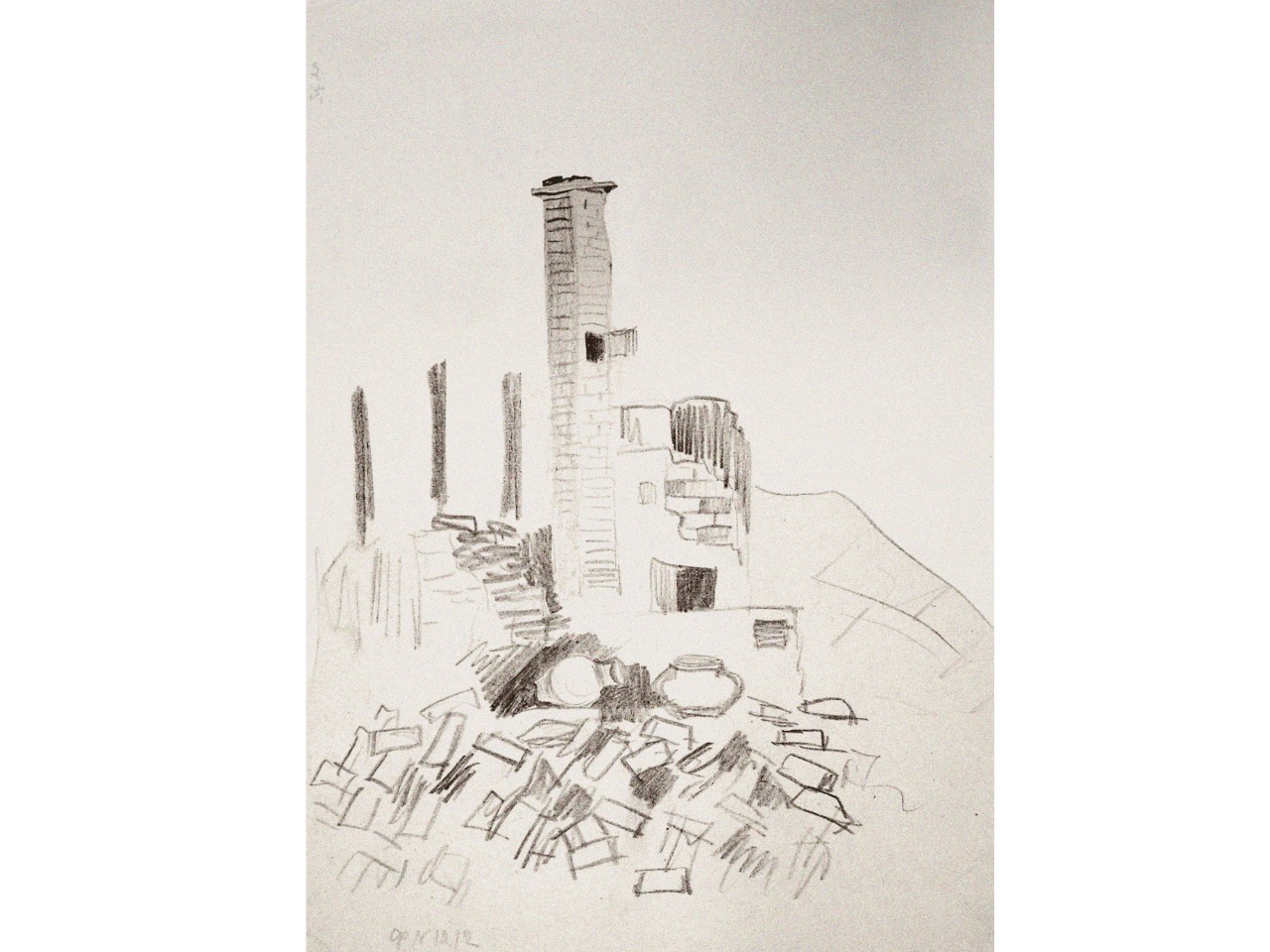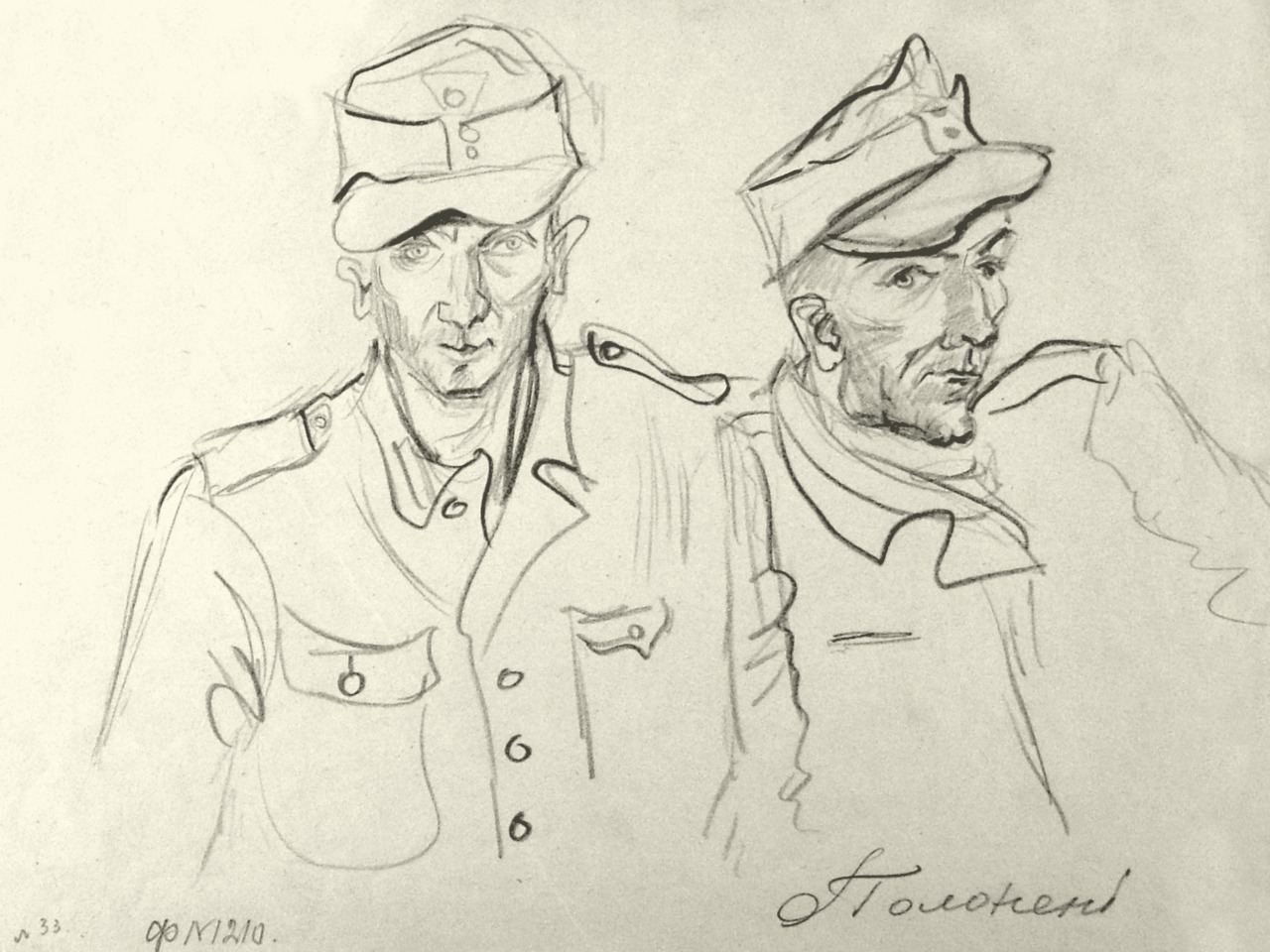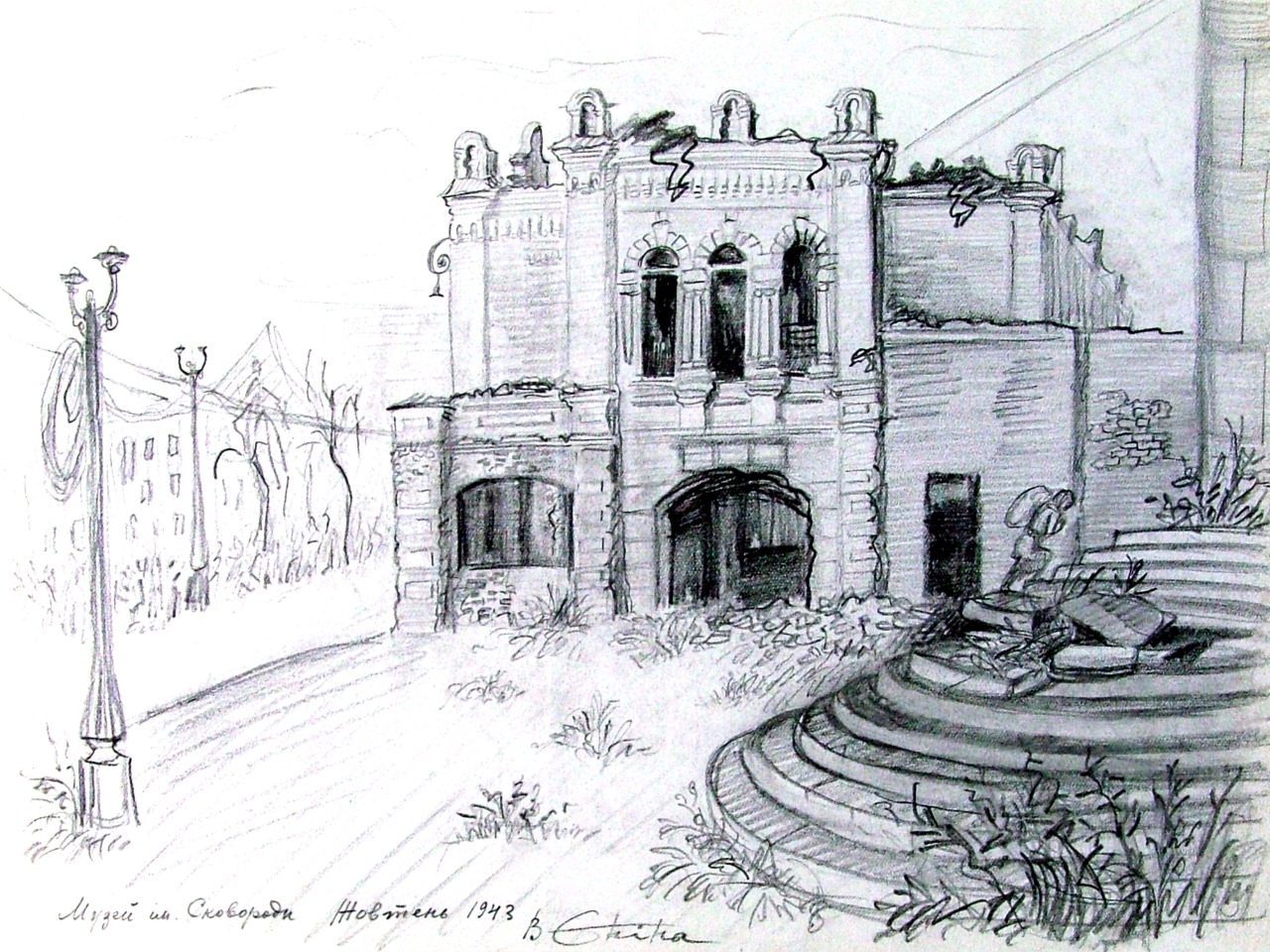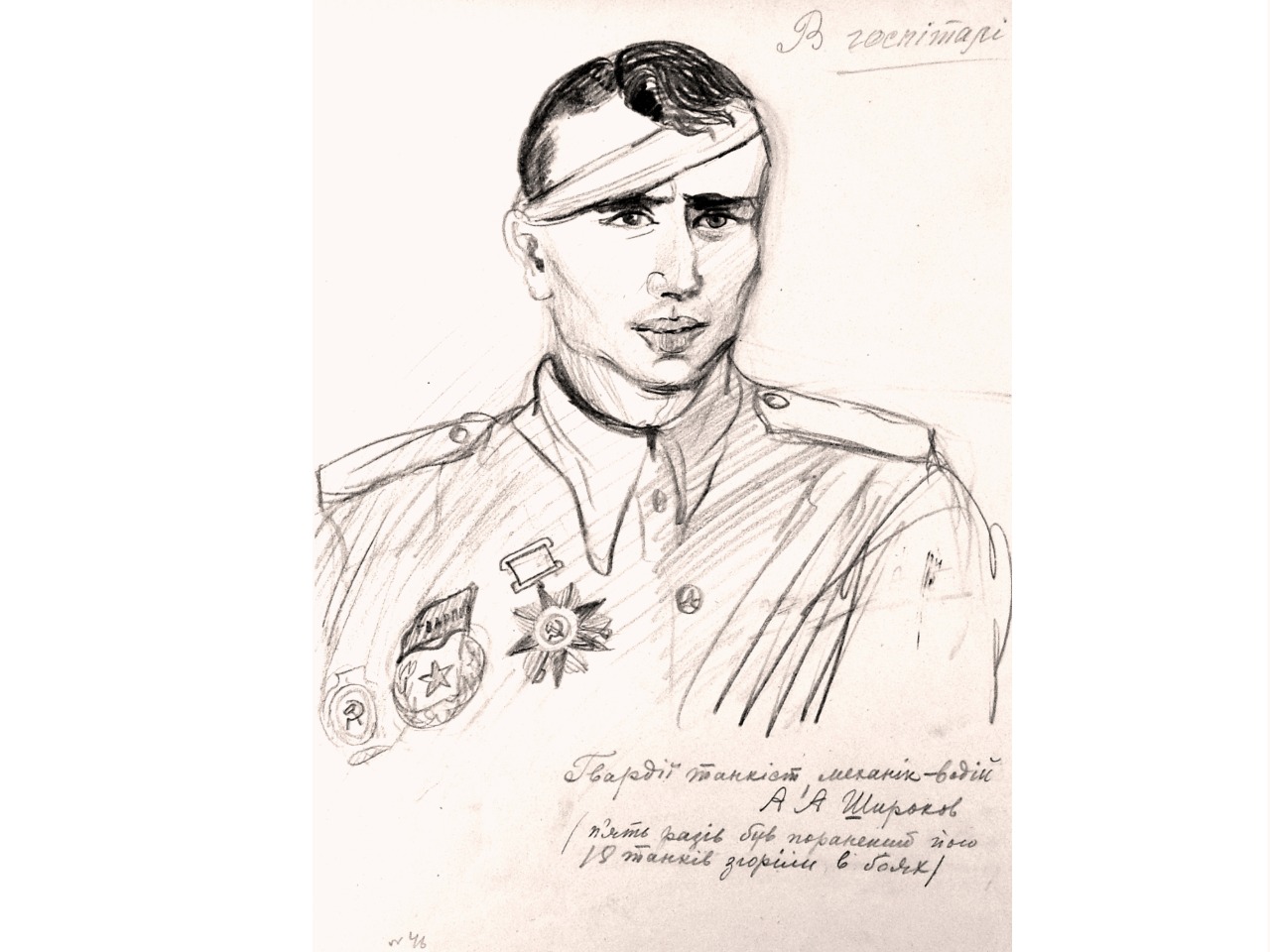Half of them date back to 1944. Beyond their historical value, these sketches are particularly significant because they were among the artifacts that laid the foundation of the Memorial’s holdings.
The idea of creating such a museum emerged in the spring of 1943, when the Central Committee of the Communist Party (Bolsheviks) of Ukraine drafted a resolution “On the Establishment of the Museum of the Patriotic War of the Ukrainian People.” The document defined among its priority tasks the need to “organize the collection of relics, memorials, and documents of the Patriotic War in Ukraine; to show the heroic struggle of the Ukrainian people in close connection with the peoples of the USSR.”
In the summer of 1944, the first collecting expedition was launched under the auspices of the State Historical Museum of the Ukrainian SSR. It was headed by writer Ahata Turchynska and included prominent writers, sculptors, and artists of that time. Among them was the Ukrainian writer, poet, graphic artist, and translator Vira Yenina. Following the 1st Tank Army commanded by Mykhailo Katukov, the expedition gathered more than 400 museum-worthy objects. The artist later recalled:“…We spent a whole month, from July 7 to August 7, on assignment. Following the tanks of General Katukov’s First Guards Army, we traveled in the second echelon across Western Ukraine, through the cities of Rivne, Dubno, Peremyshl, and Lviv… On the very first day, the army commander agreed to pose. While the army was partly at rest, he found the time. Pershudchev sculpted a portrait, Kostetsky painted in oils, and I drew in pencil…”
Although the team had been instructed on which figures to document, Yenina sketched everything she encountered along the way – ruined Ukrainian villages, displaced people left without homes, a girl named Mariyka from the village of Lopatynn (now Lopatyn urban-type settlement, Lviv region), who greeted tank crews and gifted them an embroidered kerchief, captured German soldiers, and more. She also created a series of drawings in a military hospital. These included portraits of Hero of the Soviet Union A. Sulyma, Order of Glory 3rd Class recipient I. Antonov, and other Red Army soldiers from the 1st Tank Army. Some works contain no commentary, while others feature detailed captions. On the portrait of a tank driver-mechanic, for example, she wrote: “Guardsman tanker A.A. Shyrokov. Wounded five times, 18 of his tanks burned in battles.”
A few years later, based on the results of this and other expeditions, the State Historical Museum established a dedicated scientific and exhibition department. In May 1950, the collection was further enriched with holdings from the newly created Museum of the Partisans of Ukraine, which grew out of the exhibition “Partisans of Ukraine in the Struggle Against the German-Fascist Invaders.” In 1973–1974, the highest party leadership of the Ukrainian SSR decided to establish the Ukrainian State Museum of the History of the Great Patriotic War of 1941–1945. From the State Historical Museum, 26,800 authentic items were transferred to the new institution. On October 17, 1974, the Museum opened its doors in the Klov Palace in Kyiv. Thus began the history of our Memorial.



